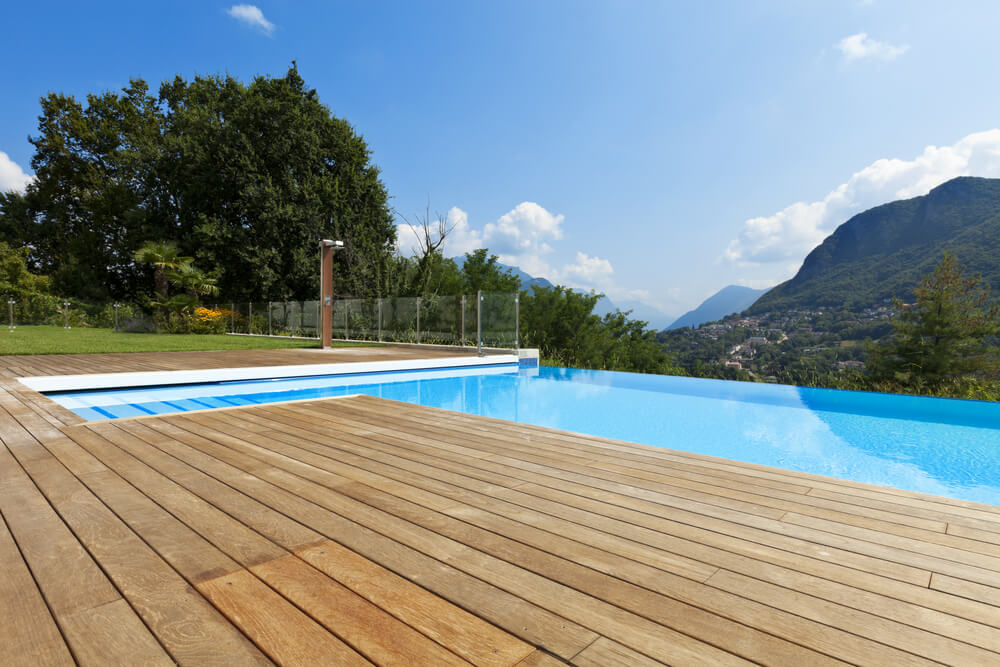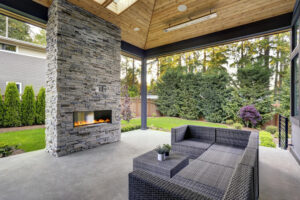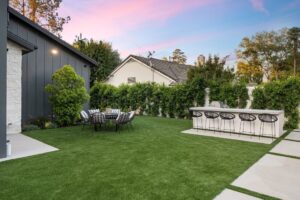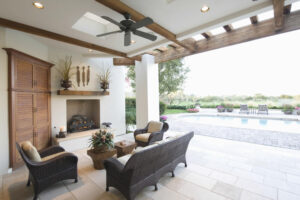Most people decide to remodel their pool because they want to replace a worn-out pool deck with a new, shiny one. While that decision isn’t too hard to make in and of itself, a lot of people struggle to pinpoint the coping material they want to use, mostly because they aren’t aware of the upsides and disadvantages of each type.
If you’re struggling to come up with pool edging ideas, take a moment to check out some of the materials we’ve covered in this article. Our goal is to bring these seemingly complex decisions closer to our readers and help them make the right choice by providing insights into the do’s and don’ts as well as the overall quality of various pool coping materials.
Pool Coping Miami – Types of Materials
Before we dive into the descriptions, it’s important to point out that the materials aren’t listed in any specific order. In simpler words, one is not better than the other just because it’s higher on the list.
-
Concrete
Concrete is probably among the most frequently used materials for pool coping. The reason for this is because it’s easy to work with, and it’s usually a more affordable option in comparison to some other materials. Poured concrete is an excellent idea because it offers a seamless transition between the coping and the pool deck. This particular technique makes your pool look bigger, and it makes the line between your deck and coping smooth and clean. Therefore, poured concrete is an excellent idea for people who have a relatively small pool.
Unlike poured concrete, precast concrete is not the best for seamless transitions, but it’s less expensive and available in a variety of shapes and colors. The most significant advantage of this particular method is its affordability in comparison to the above-mentioned technique.
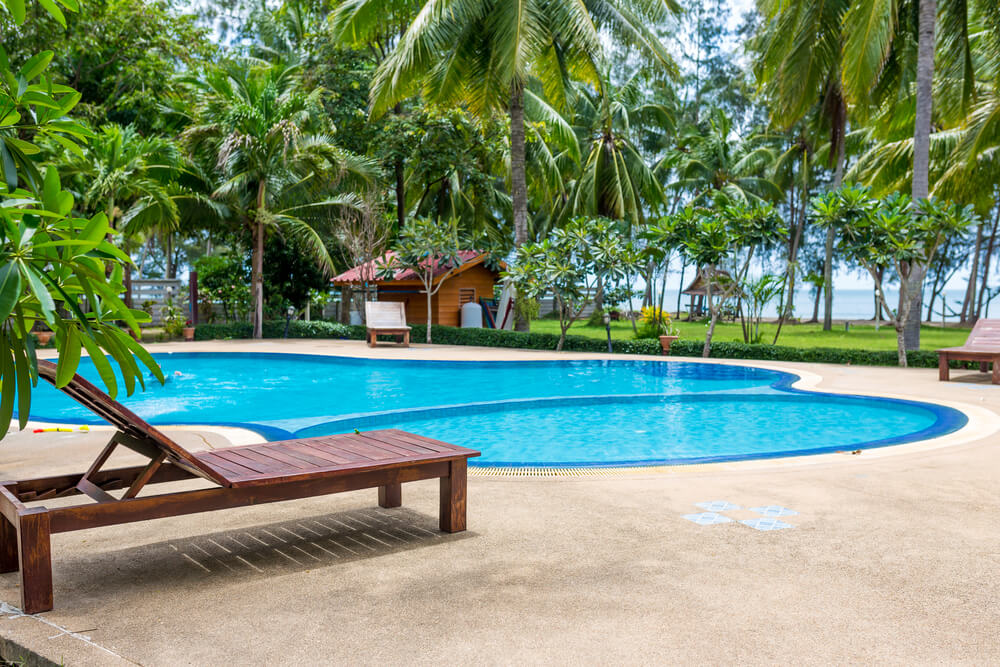
-
Pavers
Pavers are quite popular in the world of concrete coping materials, mostly because they are much less likely to crack than a big, solid piece of concrete. On top of that, since pavers come in tiles, it’s much easier to replace a broken piece since you only have to replace a single tile rather than having to remodel the whole chunk of poured concrete.
Pavers are slightly more expensive than precast and poured concrete, but many pool owners find them a worthy investment, and we wholeheartedly agree.
-
Natural Stone
When it comes to exclusivity and high-end materials, natural stone is definitely near the top. It’s important to remember that “natural stone” is actually quite a broad term, and it includes everything from limestone to marble and travertine.
Here are some of the properties of popular natural stones:
-
Marble
Marble is an incredibly durable stone, and it can withstand harsh weather conditions without any issues. This dense material was used thousands of years ago by the ancient Greeks and Romans to build breathtaking statues, monuments, and buildings. The fact that many of those awe-inspiring creations are still standing to this day goes to show how durable and resilient marble is.
One thing that might derail you from using marble as a primary material for swimming pool coping in Miami is its price. On the other hand, it’s hands down the best choice if you want your space to stand the test of time and look incredible at the same time.
-
Travertine
Travertine is known as conditionally slip-resistant because its grip increases when it’s wet. This feature alone makes it one of the best solutions for pool decks, and since it’s more affordable than marble, travertine is usually the number one choice for many pool owners who want a classy deck for a reasonable price.
Travertine can also come in a variety of colors and finishes, making it suitable for additional uses such as countertops and facades. If you’re looking to match your outdoor furniture with your pool deck, travertine might be an excellent choice. It also doesn’t require too much maintenance, so it’s great for people who aren’t keen on cleaning the area around their pool too often.
-
Sandstone
Sandstone is unique because one of its intended features is to erode over time, creating a rugged and historic feel around your pool. It’s also notably porous, so it requires to be sealed before being used around a pool. However, once sealed, sandstone is incredibly durable and capable of withstanding water, wind, and heat.
Now, while this material may not be the most popular on our list for many reasons, it’s still an excellent choice for people who like authenticity and earthy tones.
-
Brick
Even though bricks probably aren’t the first choice of many pool owners, it’s still a material you should consider implementing into your outdoor environment. Brick is an excellent material if you’re looking for a solid, durable, and aesthetically pleasing pool deck. However, it’s not as easy to work with as one would assume, and unlike with precast materials, you can’t swap a single brick if it happens to crack.
With that being said, you can always include bricks as an alternative (secondary) material to complement the primary material you’ve decided to use.
How to Choose the Right Material for Your Pool?
There are several factors you should consider when choosing the best material for your pool deck. Here are a couple of the most important ones:
-
Not Slippery When Wet
While this seems like a pretty obvious thing to consider, you would be surprised by the number of people who don’t. Fortunately, it’s pretty easy to remember, and the reason for this is quite logical – you don’t want a slippery pool deck because it’s a massive safety hazard.
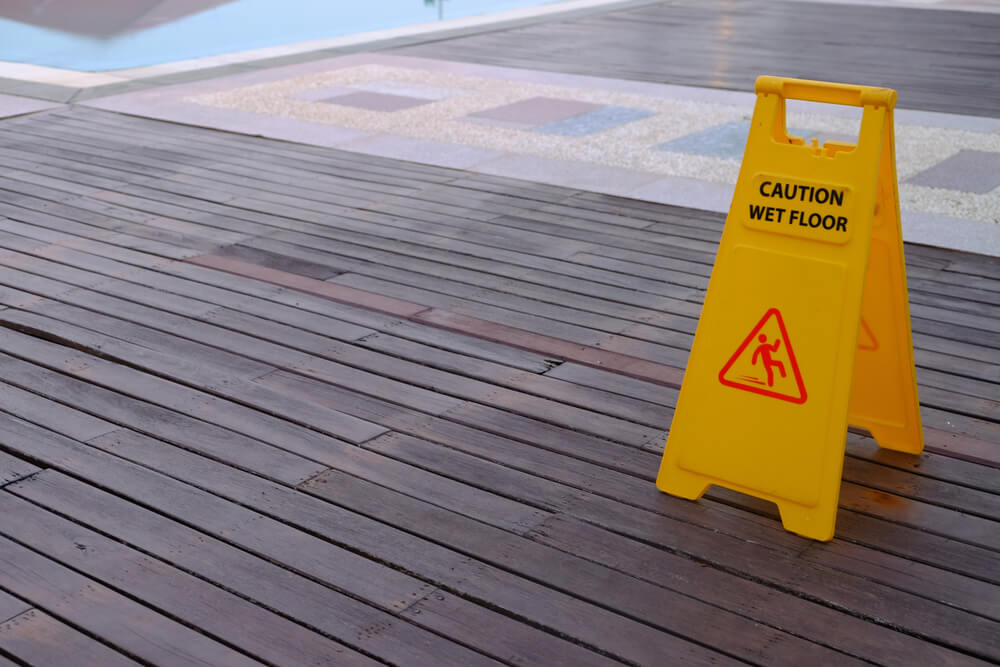
-
Heat-Reflective Materials
No matter how beautiful and mesmerizing a particular type of material is, if it’s not heat-reflective, don’t buy it. While in theory, you could get away with installing materials that soak up the heat, it’s not something we would recommend. Being able to keep your deck relatively cool during the summer in Miami is priceless, and it should probably be the number one feature you should look into when choosing the type of material for your deck.
-
Smart Budgeting
Even though this isn’t a “feature” per se, it’s a good piece of advice for people who have little to no experience with remodeling. One of the most important things you should remember is that expensive materials aren’t necessarily a better choice in comparison to more affordable materials. You don’t want to spend thousands of dollars on marble just to realize that it doesn’t blend into the theme of your yard. Similarly, you don’t want to opt for the cheapest material just because it will save you money. Finding the right balance between the price, quality, and your financial capabilities is the perfect recipe for success.
If you’re looking to remodel your pool deck, call us, and we will gladly help you make the right choice.
